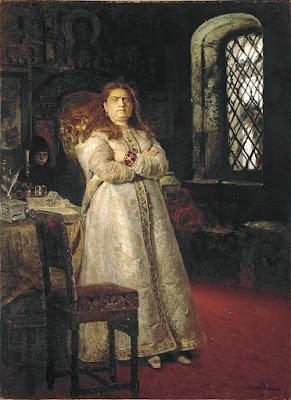When I turned in my reserve copy today at the library, there were 86 on the waiting list. Trust me, you do not want to read this book which is gruesome and awful and depressing, so why did I start it?
I guess curiosity got the best of me and about halfway in, it was too late to stop.
Readers, it doesn't get better. You know the ending. One of the most distressing aspects is the time it took law enforcement to find the killer who raped at least 50, murdered 13, and burglarized hundreds of California homes in six counties over 11 years.
The author of I'll Be Gone in the Dark (a quote from the killer): One Woman's Obsessive Search for the Golden State Killer was Michelle McNamara who died suddenly in 2016 at age 46, before she finished writing. (She died in her sleep from a combination of an undiagnosed heart abnormality and, likely, too many prescriptive drugs.)
Her book was finished by a researcher and a journalist hired by her husband, the comedian Patton Oswalt.
They did an admirable job, but the work is still disjointed and sometimes hard to follow since it is not chronologically laid out and has frequent non-sequiturs, such as a mention of President Obama at the beginning of a chapter about a case in the 1970s.
Huh? President Obama was around (publicly) in the 1970s? Nope, it's just the author having a discussion with a detective about Obama. (What does this have to do with this story?)
Cuff links? Where's the last piece of this puzzle? Were pages missing from the book I read?
The writing style is what I call "choppy newspaper." You know the kind. Suggestion for the paperback version coming out: Some of the victims' and detectives' names can be omitted to reduce confusion. (I don't understand why pseudonyms are used for the dead, but maybe those were the rape victims who are still living? You catch my drift about befuddlement.)
The book details Ms. McNamara's compulsive search for the killer, and despite law enforcement which tries to claim most of the credit finding the old geezer, her book (published in February of this year) brought renewed attention to the cases, resulting in the capture of the animal only two months after publication or about 32 years after his last known crime.
Ms. McNamara coined the description, "Golden State Killer."
Why did the killer stop committing crimes in 1986? Look at him. You think he could leap over another fence like he did so many times in his younger days going from door-to-door searching for prey? Or swing his big fat leg over a bike bar? (In some cases, he used bicycles to make his getaways.)
Another sad aspect of this tragedy is the failure of many, many neighbors to report "little" crimes they saw and heard around their homes and in their neighborhoods, like his shoe tracks found beneath hundreds of windows, stolen bicycles, his loot found on roof tops, the weird phone calls.
People! Report your suspicions! Let the police be the deciders.
Loose ends were not linked because the murderer spread his evil across so many jurisdictions. Communications and different clues led police on separate paths, unaware for years they were dealing with the same person while he continued raping and murdering and burglarizing.
Since the book ends before his arrest, that and the cause of Ms. McNamara's death are excluded, but I read somewhere that the paperback version will have an extra chapter about finding the killer, and how he was nailed due to his family uploading their DNA. Thank you, killer's family.
Unless you want to add misery to your life, you do not want to read this book. I wish I hadn't. The agony of the victims and their families!
I don't believe in the death penalty, but I do believe in solitary confinement for this savage, 24 hours a day with his wrists and legs in chains in a box, on his back, spread eagle on a concrete floor with no sunlight or windows. He can lay and sleep in his waste. Be fed and watered via IV. Prolong his life as much as possible with fresh clothing, quarterly. This sentencing is too light for the monster he is, but I certainly can wish to be called for the jury pool.
Thank you, Michelle, and family.
patricialesli@gmail.com






